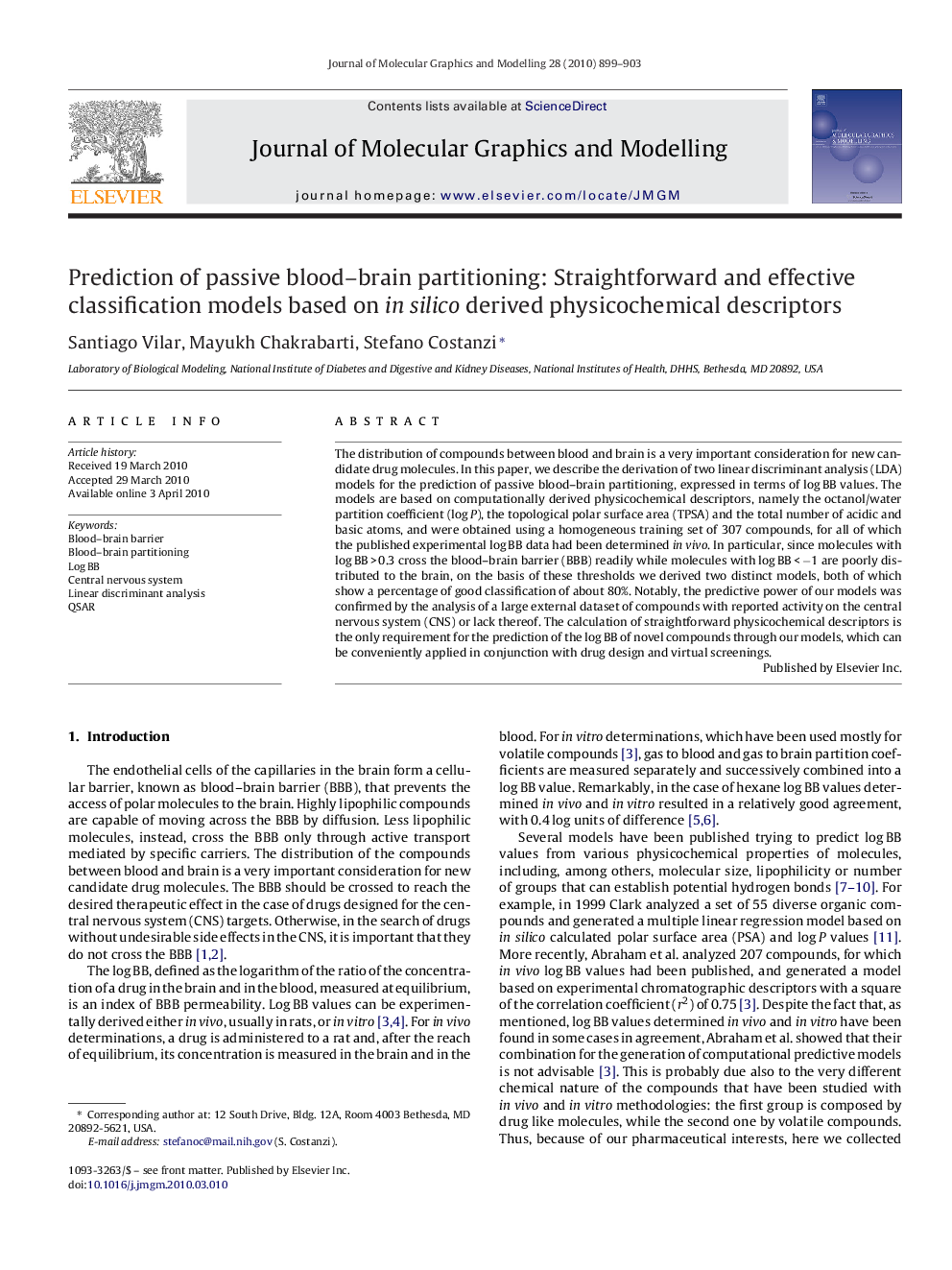| Article ID | Journal | Published Year | Pages | File Type |
|---|---|---|---|---|
| 443563 | Journal of Molecular Graphics and Modelling | 2010 | 5 Pages |
The distribution of compounds between blood and brain is a very important consideration for new candidate drug molecules. In this paper, we describe the derivation of two linear discriminant analysis (LDA) models for the prediction of passive blood–brain partitioning, expressed in terms of log BB values. The models are based on computationally derived physicochemical descriptors, namely the octanol/water partition coefficient (log P), the topological polar surface area (TPSA) and the total number of acidic and basic atoms, and were obtained using a homogeneous training set of 307 compounds, for all of which the published experimental log BB data had been determined in vivo. In particular, since molecules with log BB > 0.3 cross the blood–brain barrier (BBB) readily while molecules with log BB < −1 are poorly distributed to the brain, on the basis of these thresholds we derived two distinct models, both of which show a percentage of good classification of about 80%. Notably, the predictive power of our models was confirmed by the analysis of a large external dataset of compounds with reported activity on the central nervous system (CNS) or lack thereof. The calculation of straightforward physicochemical descriptors is the only requirement for the prediction of the log BB of novel compounds through our models, which can be conveniently applied in conjunction with drug design and virtual screenings.
